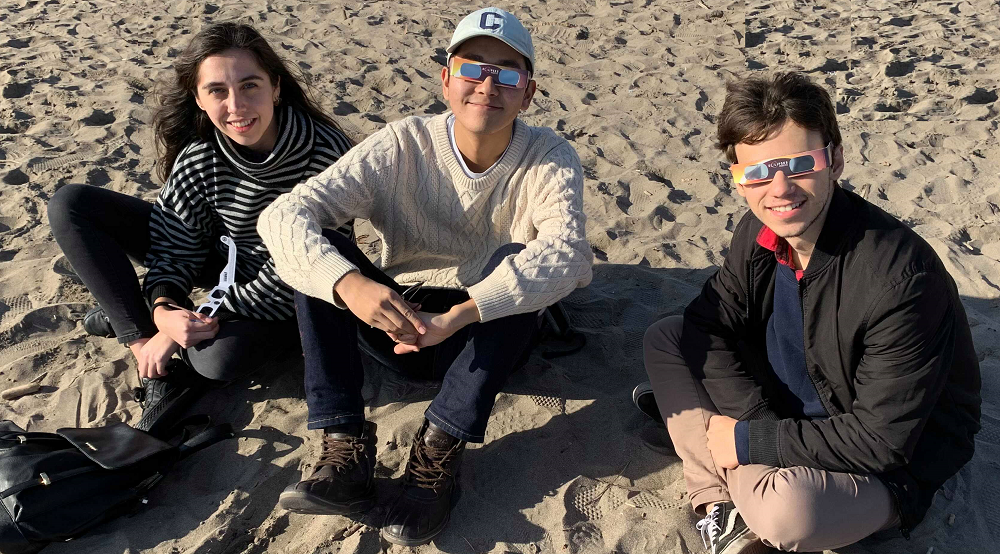Columbia Undergrads Intern at Universidad Católica de Chile’s Astronomy Department

Two fourth-year undergraduate physics majors from Columbia University are spending their summer term researching astrophysics under the leadership of professors from Universidad Católica, as part of an ongoing exchange program sponsored by the President's Global Innovation Fund (PGIF), the Columbia Global Centers | Santiago and Columbia’s Department of Astronomy.
Specifically, Douglas Filho is working with Professor Julio Chaname in trying to find a population of wide-binaries in the Bulge, or a tightly packed group of stars. While this has never been done, “if we do find such a population, it could provide us some constraints on the distribution and mass of dark matter within the bulge,” Filho noted. He also had the opportunity to go to the Cerro Tololo observatory and use the DECam 4m telescope for four nights of observation.
Meanwhile, Adam He is researching active galactic nuclei (AGN) under the leadership of Professor Franz Bauer. “We are simulating point source images with information extracted from CHANDRA X-ray telescope data and comparing them with the real data to investigate the radial, azimuthal, and morphological properties of the emission," said He.
“We are extremely excited about our exchange program with our colleagues at Universidad Católica. Once again, two outstanding undergraduate students have the opportunity to work directly with astrophysicists in Chile on cutting-edge research programs,” according to Frits Paerels, Director of Undergraduate Studies at Columbia’s Astronomy Department. “The existence of this exchange is a powerful draw for students to come to Columbia, since Chile is a center for astrophysical research of premier global significance, in addition to hosting the most powerful optical observatories in the world.”
During their time in Chile, both students were also able to travel with some Universidad Católica graduate students to see the full solar eclipse which took place on July 2. Thanks to its dry nights, low light pollution, and high elevations, Northern Chile’s night skies boast a unique transparency and are considered the best in the world for astronomical observation.
An estimated 40% of worldwide astronomical observation takes place in Chile, and with the addition of three new telescopes - LSST (Large Synoptic Survey Telescope, set to enter operations 2022), GMT (Giant Magellan Telescope, launch planned 2020), and the Alma (Atacama Large Millimeter/submillimeter Array, operating) - the country is expected to represent over 50% of global astronomical viewing.
Thanks to PGIF sponsorship, a number of graduate and undergraduate Columbia students have come to Chile to study the galaxy.